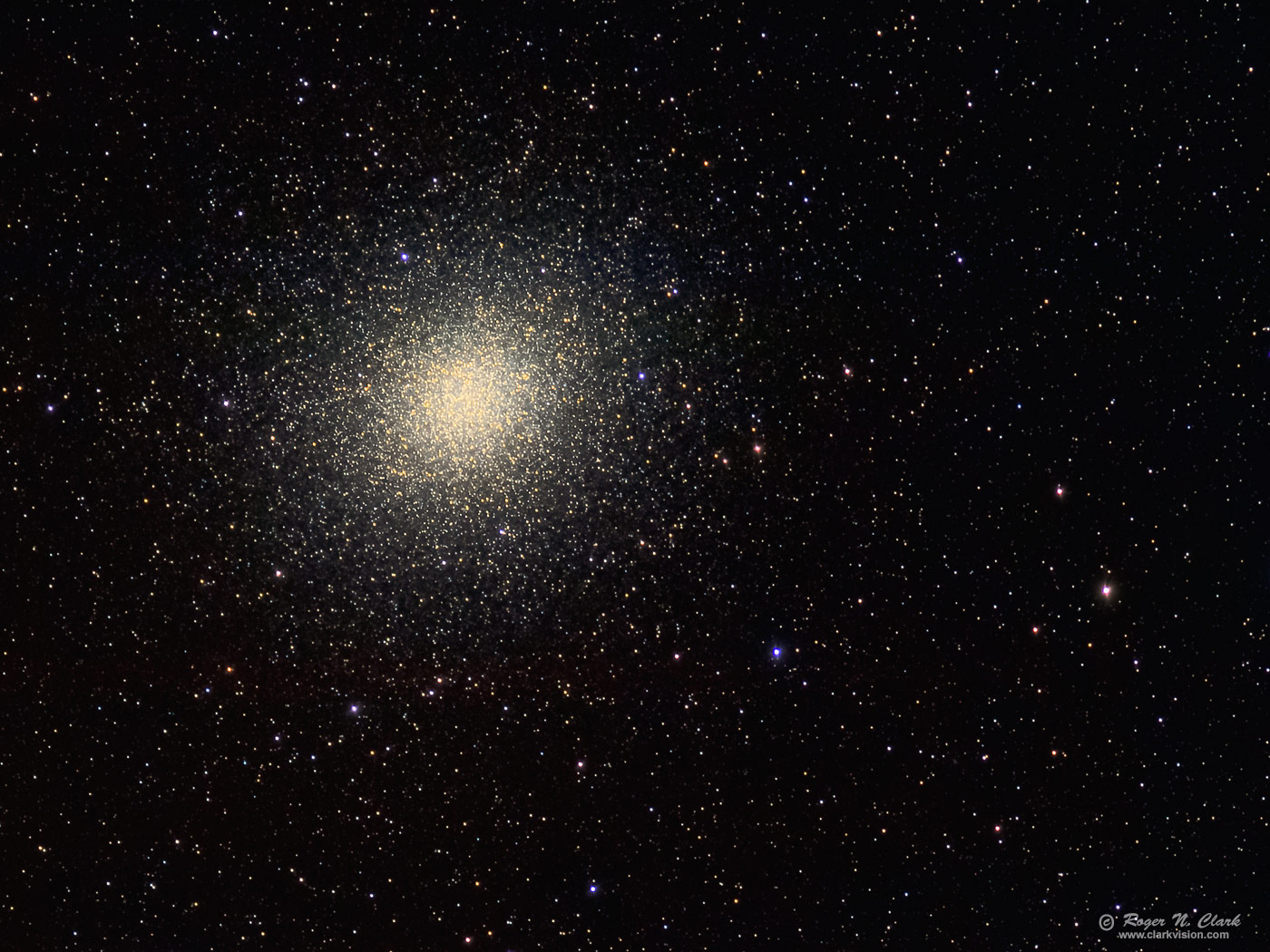| Home | Galleries | Articles | Reviews | Best Gear | New | About | Contact | Gallery Index | Previous |
Next |

| Home | Galleries | Articles | Reviews | Best Gear | New | About | Contact | Gallery Index | Previous |
Next |

Omega Centauri is the largest globular star cluster in angular size in the sky. It is an amazing view in small amateur telescopes. It is almost 16,000 light years distant, has a diameter of about 150 light years and contains about 10 million stars. Its angular size is larger than that of our full Moon. Omega Centauri may be the core of a small galaxy disrupted and captured by the Milky Way. The ages of stars covers a larger range than is typical for globular clusters, more consistent with a galaxy than a star cluster.
Technical. This image was obtained with a stock Canon 7D Mark II 20-megapixel digital camera and 300 mm f/2.8 L IS II lens plus a 1.4x teleconverter giving 420 mm at f/4, and ISO 3200. No dark frame subtraction, no flat fields. Tracking with an Astrotrac and no guiding. Fifteen and one-half minutes total exposure (31 30-second exposures). This image is a crop to show detail at 2/3 full resolution, 3.0 arc-seconds/pixel in this image. This image was obtained with My Very Portable Astrophotography, Landscape and Wildlife Photography Setup.
This image was obtained from the 9200 foot level on Mauna Kea Hawaii. At this latitude, 19.75 degrees north, Omega Centauri is low in the sky. But it was low in the sky in the direction of the erupting Kilauea volcano which was covering the island with considerable haze. To add to the difficulty, it was breezy, causing shake to the system, so I elected on the higher than usual ISO and shorter exposure times.
This is a natural color image. The high dynamic range of astrophotos must be stretched to bring out the range of details the camera recorded. But the typical image stretch process loses color for brighter subjects (e.g. stars and the brighter parts of deep sky objects become whiter as they are made brighter). This image uses a new algorithm that does not lose color during the stretch. The new algorithm enables fainter details to be shown and with less noise. Learn about the new software and download it free (open source) here: rnc-color-stretch.
Post processing: stretched with rnc-color-stretch. Also see Astrophotography Image Processing Basic Work Flow. This image is a result of 3 runs of the stretch tool and assembled with the brightest sections with the least stretch and the faintest the hardest stretch in order to show the full dynamic range.
The Exposure Factors, CEF, CEFA are measures of the relative amounts of light received from a subject. It can be used to fairly compare wildly different lens/telescope apertures and exposure times. For this image:
Modern DSLRs like the 7D Mark II include on sensor dark current suppression and low fixed pattern noise at ISOs around 1600 and higher, making no need for dark frame subtraction. Modern raw converters correct for light fall-off and also correct for hot/dead/stuck pixels. This makes processing low light images easy: simply align and average.
To learn how to obtain stunning images like this, please visit my Extensive Articles on Photography .
See my review of the Canon 7D Mark II and why it is so good for astrophotography: Canon 7D Mark II sensor analysis.
Keywords to this image = astrophoto-1 star_cluster night low-light digital_astro canon_7d2 rnc-color-stretch
Image ID: omega-centauri.420mm.rnclark.c03.17.2018.0J6A1242-72av31.f-0.66x-1400s.jpg
| Home | Galleries | Articles | Reviews | Best Gear | Science | New | About | Contact |
Last updated November 03, 2025